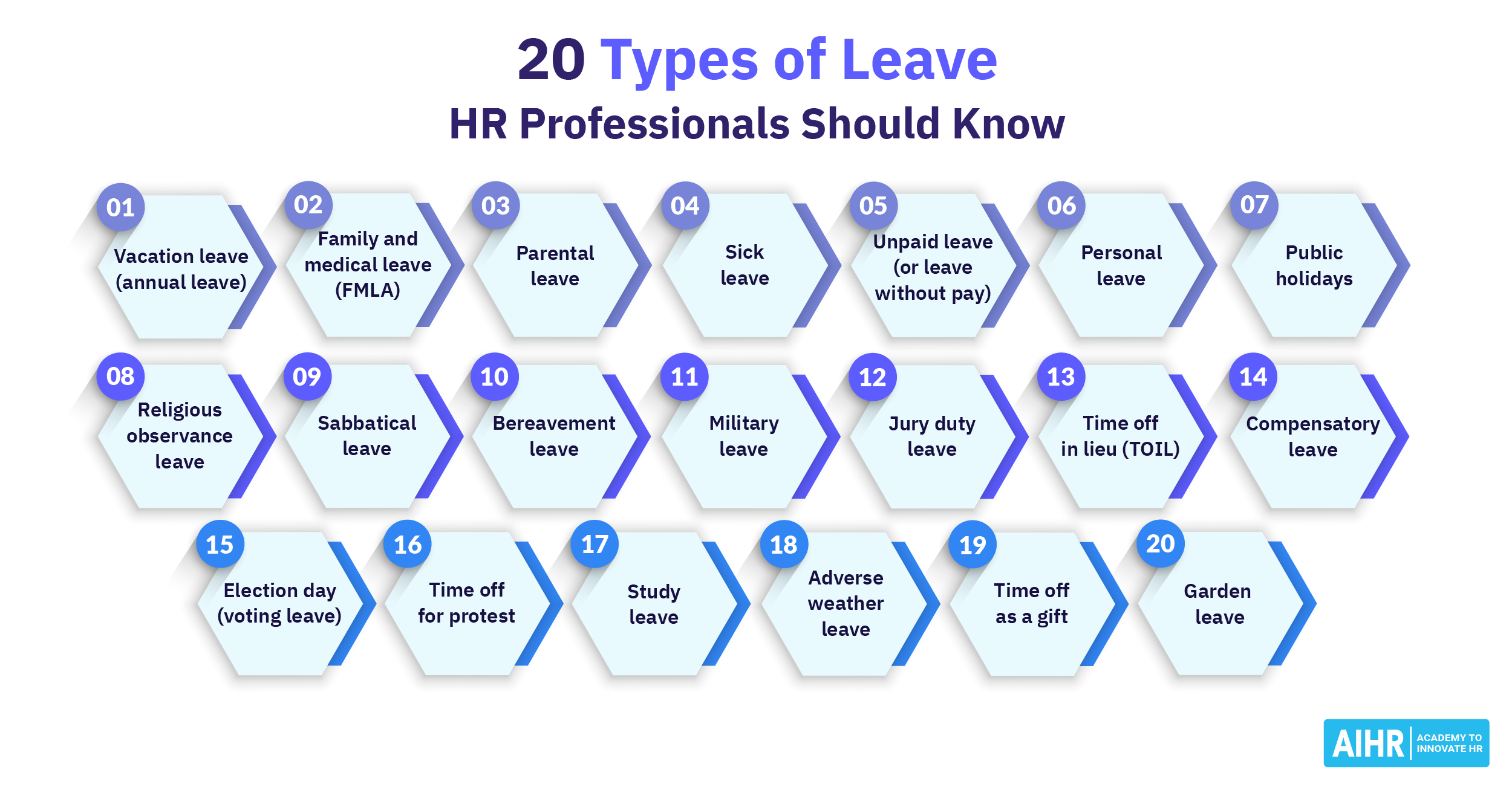What is leave without pay?
Leave without pay (LWOP) is an approved absence during which an employee doesn’t receive wages. It’s typically granted at the employer’s discretion and may be used when an employee has exhausted their paid leave or needs time off for personal reasons.
LWOP doesn’t break an employee’s continuous service but may affect the accrual of entitlements like annual leave and long service leave.

Leave without pay rules
While commonly used in Australian workplaces, leave without pay is not heavily regulated by law and is governed by employer discretion, internal policies, and industrial instruments. Here are the general guidelines HR should follow:
It’s not a legal entitlement (except in limited cases)
LWOP is not a general entitlement under the Fair Work Act 2009. Employees may request unpaid leave, but employers aren’t required to approve it unless it’s linked to specific statutory leave types, such as:
- Parental leave: Eligible employees may access up to 12 months of unpaid parental leave, with the right to request an additional 12 months (up to 24 months total).
- Community service leave: Includes unpaid leave for jury duty (after the first 10 paid days) or emergency service work.
- Other statutory unpaid leave: Additional unpaid time related to domestic and family violence leave, where 10 days of paid leave is standard in most sectors.
Subject to employer approval and internal policies
Employers aren’t obligated to approve unpaid leave outside statutory entitlements. Most organizations set guidelines through internal policies, which typically:
- Define acceptable reasons (e.g., study, personal matters, extended travel)
- Outline how employees can request LWOP
- Clarify approval processes and return-to-work conditions.
Impact on employee conditions and entitlements
LWOP usually affects entitlements in these ways:
- Annual and personal leave: Do not accrue during unpaid periods unless otherwise stated.
- Superannuation: Generally not paid during LWOP, as it only applies to ordinary time earnings.
- Service continuity is typically maintained, but depending on jurisdiction, some entitlements (e.g., long service leave) may be paused.
No set maximum duration
There’s no fixed maximum duration for LWOP under federal legislation. Employers can set limits through internal policies or handle requests case by case. Some enterprise agreements may specify maximum lengths.
HR tip
Some states and territories have different rules around long service leave and how LWOP affects it, so make sure you check both federal and state laws.
Industrial instruments may apply
Modern awards, enterprise agreements, or employment contracts may contain specific provisions regarding when LWOP is allowed, approval conditions, and maximum durations or eligibility.
Visa and immigration considerations
For employees on temporary work visas, LWOP may raise compliance issues because many visas require continuous employment or full-time work, and extended unpaid leave could violate visa conditions and require reporting to the Department of Home Affairs. As such, employers should confirm visa-related implications before approving extended unpaid leave.
Workers’ compensation and insurance
Employees on LWOP are generally not covered by workers’ compensation for incidents during the unpaid period, since they are not considered to be “at work”. Employer insurance (e.g., workers’ comp or income protection) may also exclude coverage during these periods.
Payroll and systems considerations
Employers should ensure payroll systems accurately record LWOP in order to:
- Prevent incorrect leave accruals or super contributions
- Meet Single Touch Payroll (STP) reporting obligations
- Avoid payroll tax and reporting compliance.
Communication and documentation
All LWOP requests should be:
- Submitted and approved in writing
- Clear about the leave’s duration, purpose, and conditions
- Transparent about how it affects entitlements and return-to-work rights.
No automatic right to return to the same role (except in protected leave)
Unless the LWOP falls under a protected category (e.g., parental leave), an employer is not legally obligated to guarantee a return to the exact same position. Employers may need to fill the role temporarily, and return-to-work arrangements should be agreed upon in advance.
Build your skills in compensation and leave strategy
Topics like leave without pay might seem straightforward, but they have important implications for entitlements, superannuation, and compliance, especially in Australian workplaces.
AIHR’s Compensation & Benefits Certificate Program helps you design clear, fair, and legally sound compensation structures. Learn how to develop policies that align with business needs, meet legal requirements, and support your employees throughout their journey.
Common reasons for leave without pay
There are a number of common reasons why employees may request leave without pay. These include:
- Extended personal leave: When an employee has used all their paid sick or carer’s leave but still needs time off, whether for ongoing recovery from illness or surgery, or to care for a seriously ill family member.
- Parental leave extensions: Employees often take additional LWOP to stay home longer with a new child, which can be up to 24 months under the National Employment Standards (NES).
- Study or exam leave: To undertake further education, participate in intensive training programs, or sit exams, especially when no paid study leave is offered.
- Travel or relocation: For personal travel, family commitments overseas, or relocating for family reasons. This is especially relevant for migrant workers who wish to return to their home country for an extended period.
- Career break or sabbatical: Some employers permit extended unpaid leave to allow employees to step away from work, pursue personal goals, recharge, or prevent burnout.
- Family emergencies: If compassionate leave entitlements don’t apply or have been used, employees may take LWOP to deal with a family crisis or extended bereavement.
- Domestic and family violence: While 10 days of paid leave is standard under the NES, additional LWOP may be requested for recovery, relocation, or legal matters.

Case example: LWOP granted for extended parental care
Amina returned to work after 12 months of unpaid parental leave, following the birth of her second child. With her partner returning to work full-time and delayed childcare, Amina asks her employer for an additional two months of unpaid parental leave. The company doesn’t have a formal parental leave extension policy, but after reviewing her request and confirming it won’t disrupt operations, her manager approves the LWOP on compassionate grounds.
What to include in a leave without pay policy
1. Define the policy’s purpose and scope
Start by setting clear expectations for both employees and managers, and align the policy with legal and organizational standards.
- Purpose: Explain when and how employees may apply for unpaid leave and how the company will assess those requests.
- Scope: Specify which employees are covered (e.g., full-time, part-time, fixed-term), and whether casuals or contractors are included.
- Alignment: Note how the policy aligns with the Fair Work Act 2009, internal policies, and relevant awards or enterprise agreements.
2. Identify the situations covered by the policy
List common scenarios where LWOP might be granted to give employees and managers a practical frame of reference. These may include:
- Medical recovery after paid sick leave has been exhausted
- Extended parental leave beyond statutory or paid entitlements
- Personal travel, study, or responding to family emergencies.
HR tip
Be clear that the approval isn’t guaranteed and each request is subject to operational needs and individual circumstances.
3. Outline the application and approval process
Establish a consistent, step-by-step approach to ensure all requests are handled fairly and transparently. Include:
- Required notice periods (e.g, two to four weeks before the start date)
- What the employee must submit (e.g., medical certificate, travel itinerary)
- The responsibilities of HR and managers when reviewing requests
- The expected timeline for responding to the request (e.g., within seven business days).
Make it clear that LWOP must be formally approved in writing before the leave starts.
4. Set parameters for duration, limits, and review points
Provide guidance on how long LWOP can last and when reviews are necessary.
- Maximum timeframes (e.g., three months for personal leave, up to 12 months for extended parental leave)
- Conditions under which extensions may be granted
- Minimum time units (e.g., leave must be taken in full-day blocks)
- Check-in points for longer leaves to review the impact on the employee’s role or entitlements.
It’s also wise to include language about possible business impacts, such as the need to fill the role temporarily during extended absences.
5. Explain the impact on employment conditions
Help employees understand what LWOP means for their entitlements and employment status. Cover:
- Whether leave and superannuation will continue accruing
- How continuity of service is treated
- Access to employee benefits
- Whether insurance or workers’ compensation still applies.
6. Clarify return-to-work expectations
Lay out the return process so employees and managers are on the same page. Address:
- Whether the employee is guaranteed the same position
- Notice requirements for returning to work early or extending the leave period
- If a medical certificate is needed for return after health-related leave
- Whether re-induction or handover is expected for longer absences.
7. Reference legal and industrial instruments
List any applicable awards, enterprise agreements, or legal instruments that may affect how LWOP is handled in specific roles or regions.
8. Include a policy review and contact clause
Conclude the policy with a review date or cycle (e.g., every two years or after legal updates), and contact information for HR or the relevant manager who can answer questions or process requests.
Alternatives to leave without pay
Here are common alternatives to leave without pay when unpaid leave isn’t approved or suitable:
- Paid leave entitlements: Employees can use any accrued annual, personal/carer’s, compassionate, or long service leave before requesting unpaid time off.
- Flexible work arrangements: Adjustments like reduced hours, compressed workweeks, or temporary remote work can help employees manage personal needs without taking full leave.
- Time off in lieu (TOIL): Employees may take time off instead of overtime pay, provided this is agreed on in advance and compliant with award conditions.
- Career break or sabbatical leave: Some organizations offer unpaid career breaks under formal policies that maintain job security, typically for study, travel, or rest.
- Leave purchase schemes: Employees can salary-sacrifice to buy additional leave, spreading deductions over time to maintain income stability.
- Shift swapping or roster adjustments: Employees in shift-based roles may rearrange duties with colleagues to cover short-term absences without taking leave.
- Using banked leave or previous TOIL: In some workplaces, employees can draw from leave balances accrued over previous years or banked TOIL arrangements.
- Unpaid statutory leave categories: Awards or legislation may provide for specific types of unpaid leave (e.g., additional carer’s leave, pandemic leave) that don’t fall under general LWOP.
- Internal secondments or role changes: Employees seeking a break due to stress or misalignment might consider a short-term transfer to a different role instead of time off.
FAQ
In most cases, LWOP doesn’t count toward continuous service for LSL accrual. However, this varies depending on state or territory legislation, enterprise agreements, or awards. Some short unpaid periods (usually under two weeks) may still count. Employers should check the relevant legal framework and communicate clearly with employees about how their LSL may be impacted.
Yes, employers are within their rights to refuse leave without pay requests. Unlike annual or personal leave entitlements, LWOP isn’t automatically owed to employees unless it’s connected to a specific statutory entitlement (e.g., parental leave). Employers should consider requests in good faith and assess operational needs, fairness, and consistency, but they’re not obligated to approve LWOP if it would unduly disrupt business operations.
This depends on the terms of their existing employment contract, relevant workplace policies, and potential conflicts of interest. Employers can set reasonable expectations or restrictions, particularly if secondary employment could impact the employee’s availability, performance, or create a competitive or reputational risk. Concerned employers should clarify expectations in writing and request disclosure before approving the leave.







